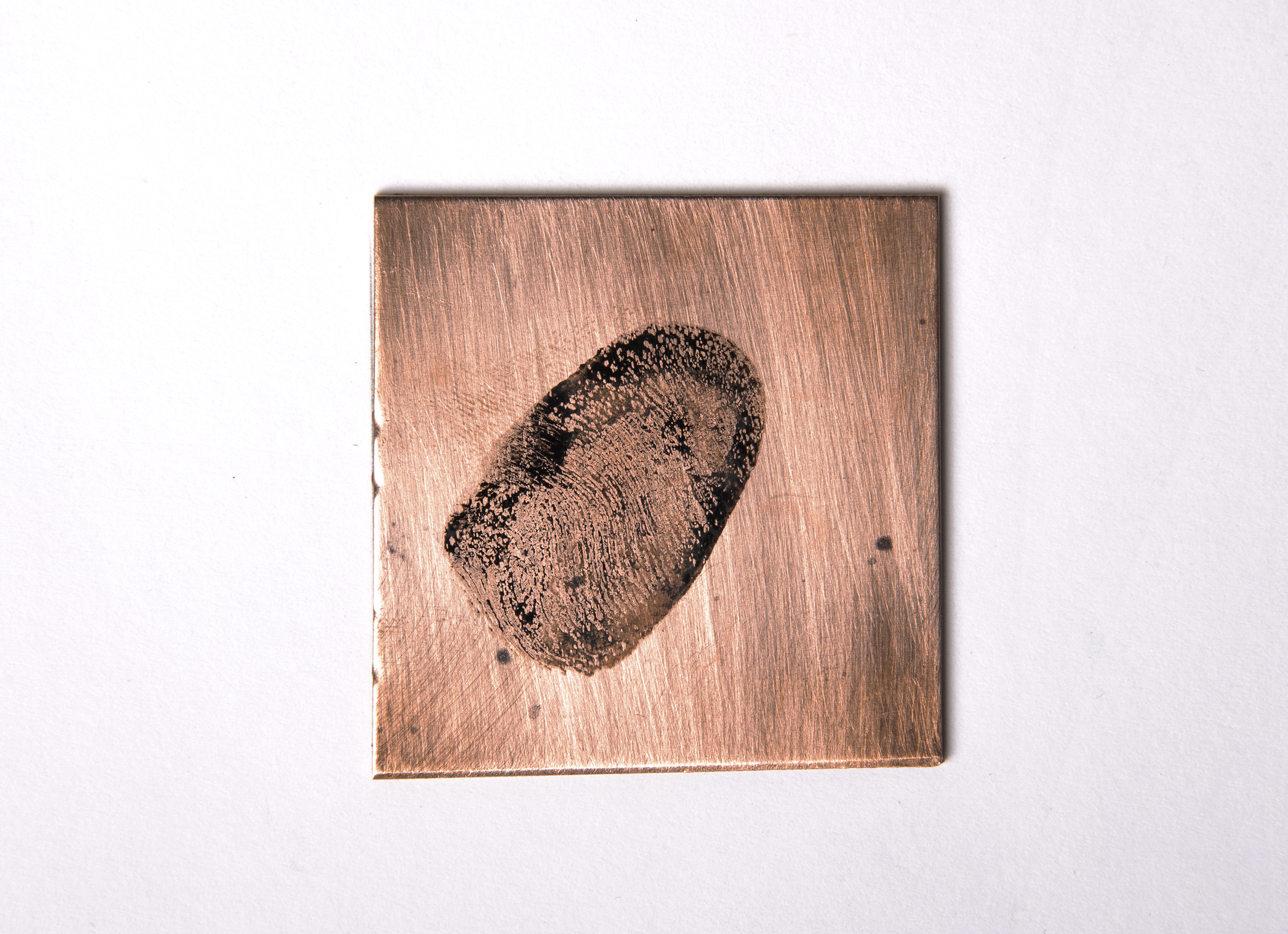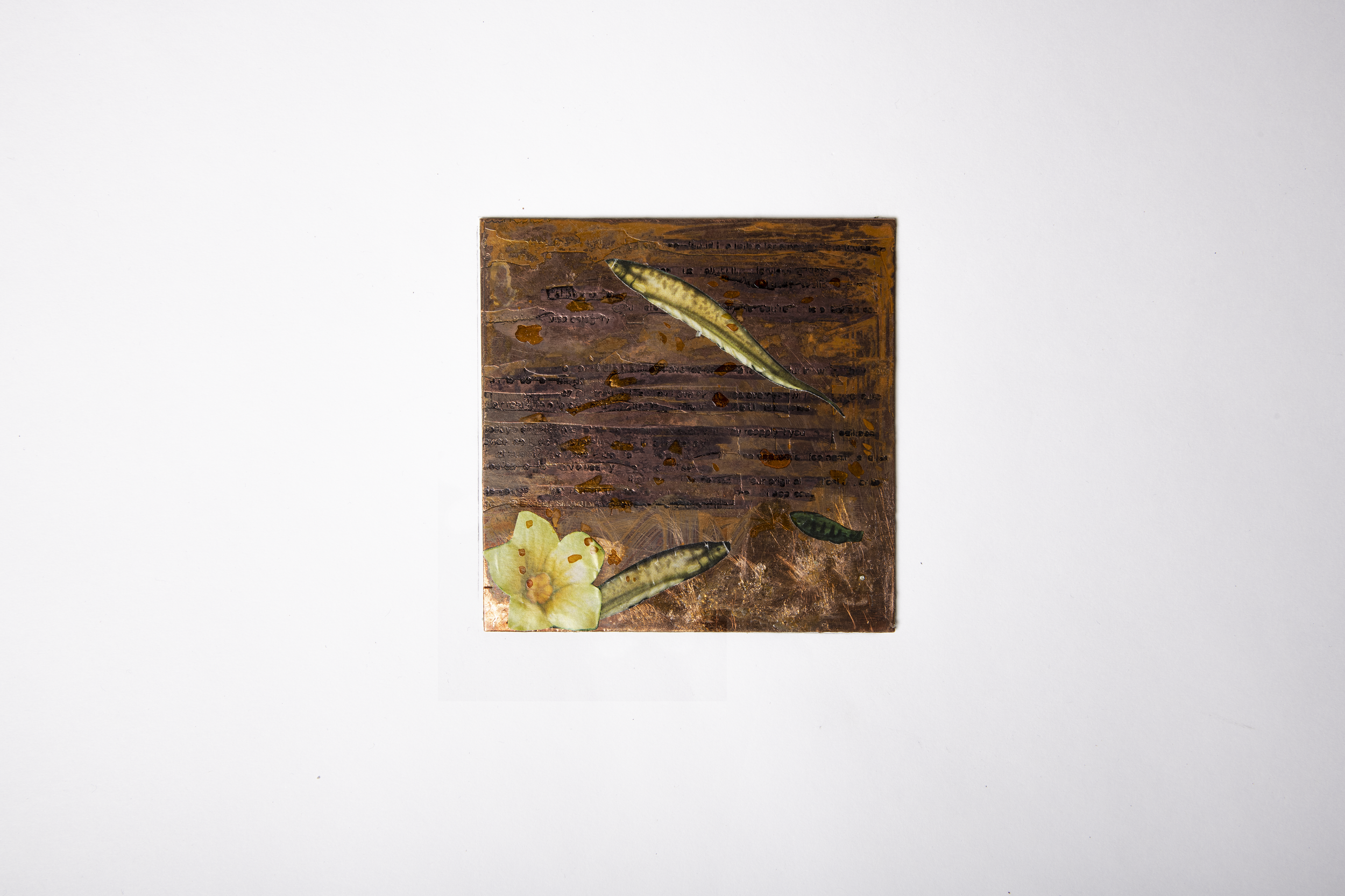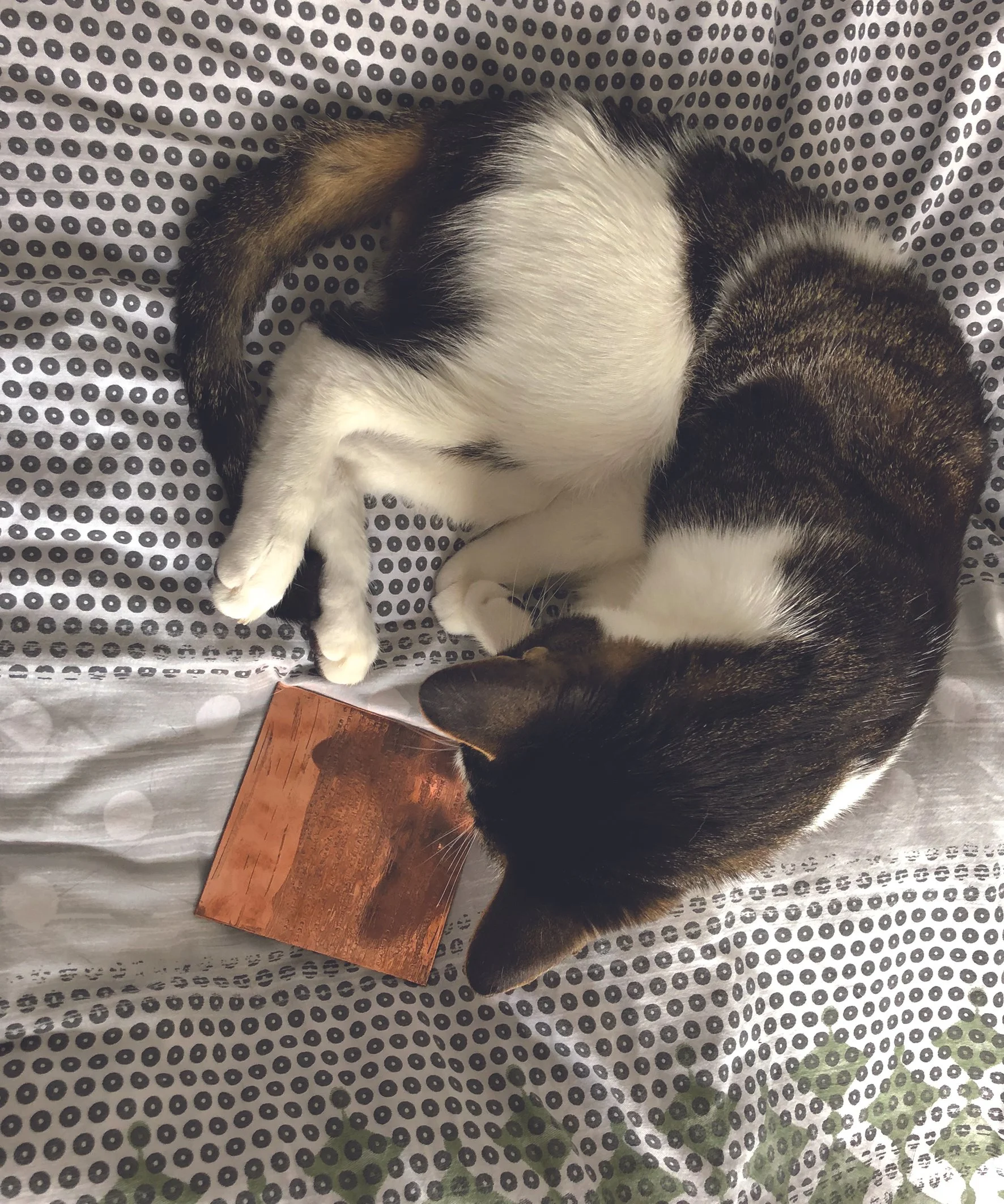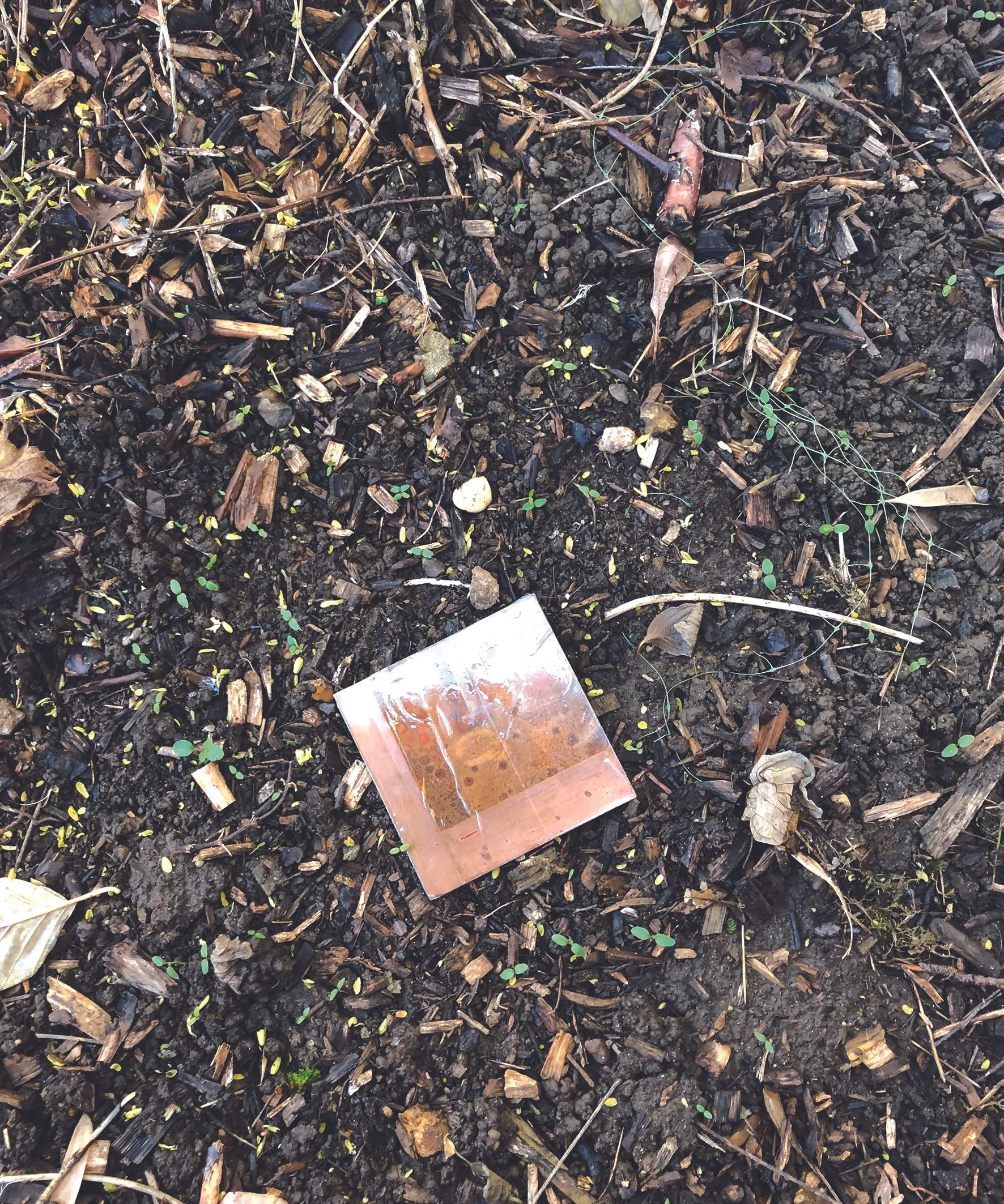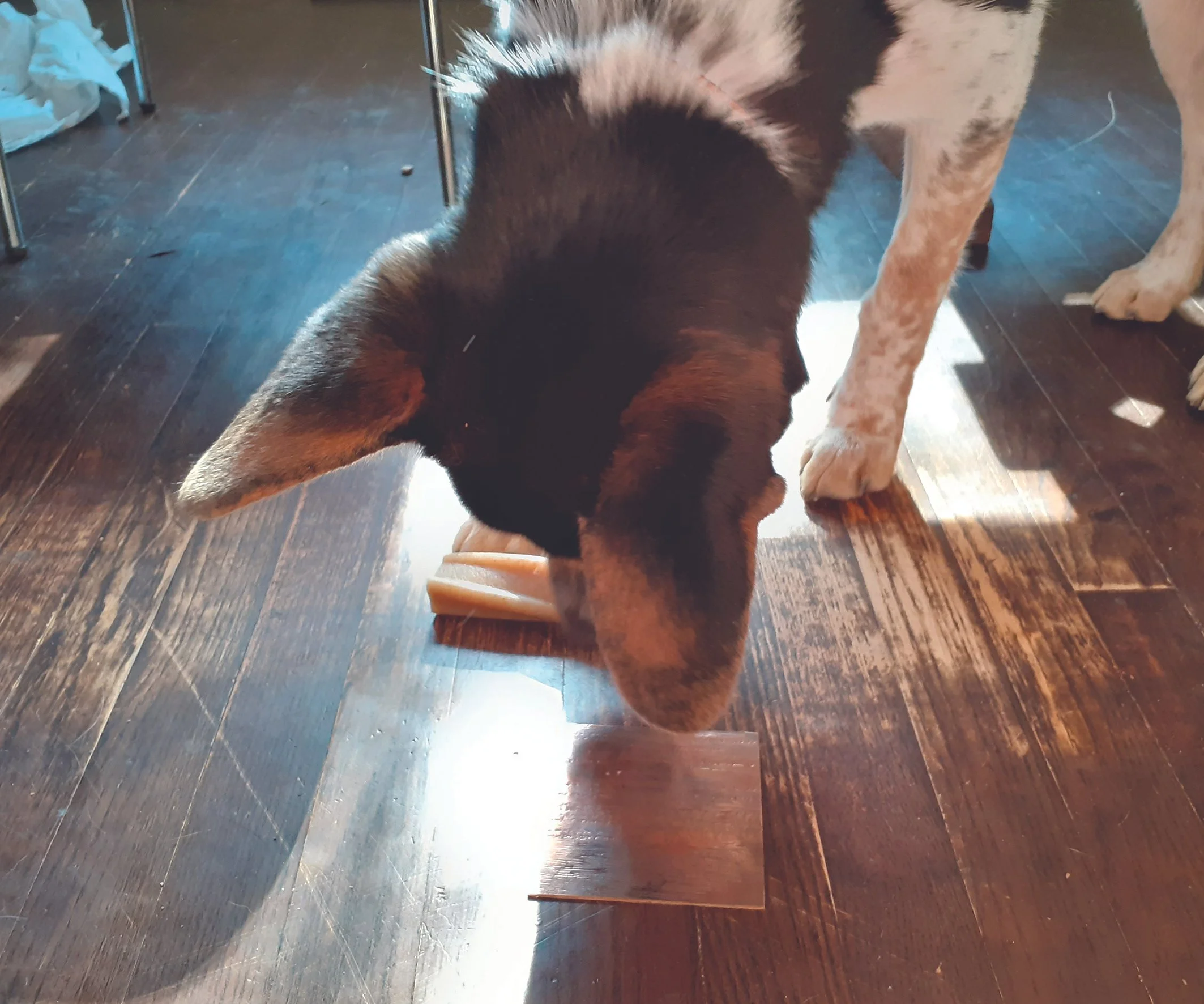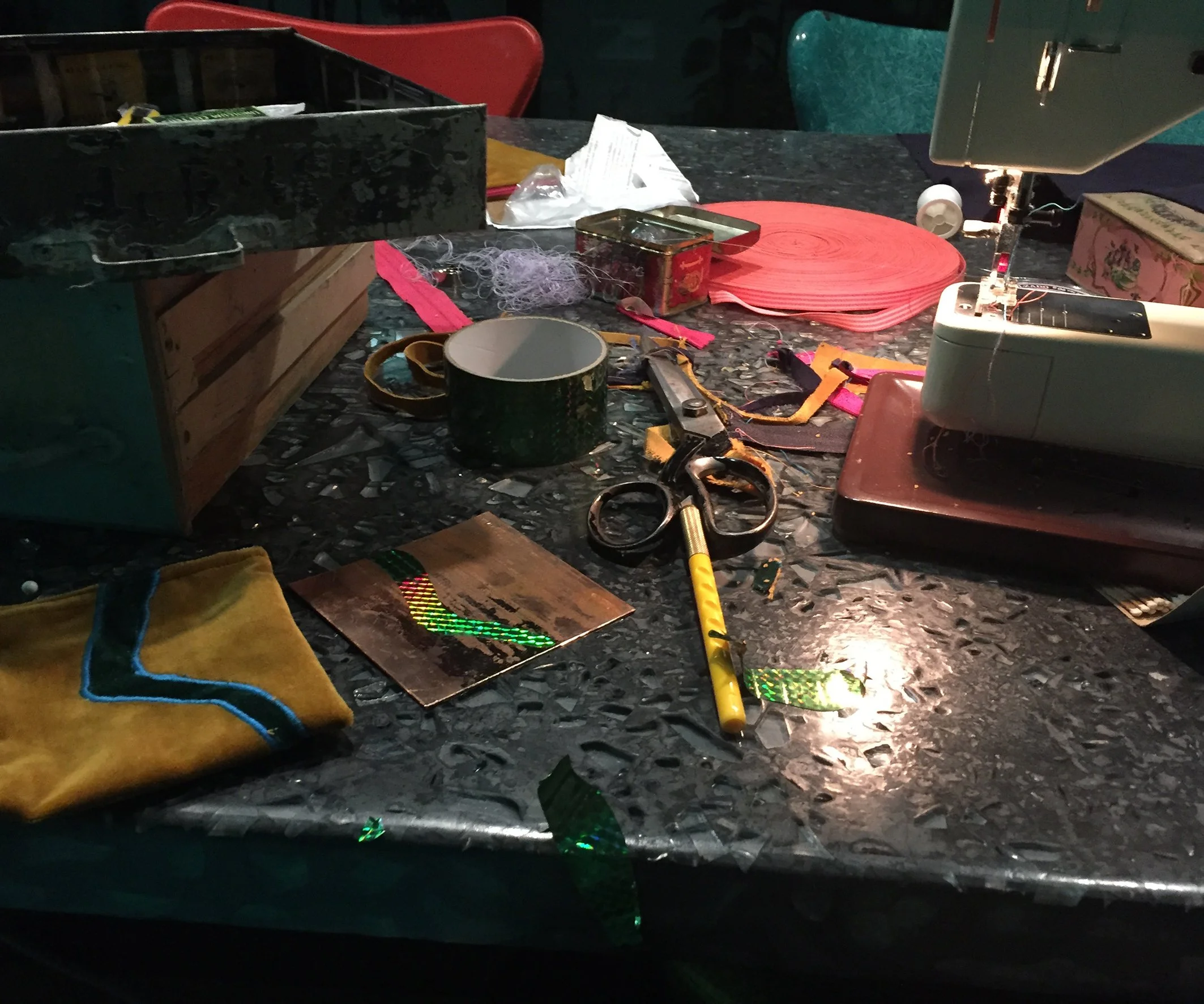"Liminal Margin" 2019
Copper, Ink, Patina, Vinyl
UAE Unlimited 2019
As a fresh word emerged - globalization, a new world has blossomed from it. Yet, even inside of this flourishing conceptual sphere, official documents are issued to regulate individual identity. Within this contemporary zeitgeist, the cultural concept of identity is in conflict. With multilateral openness and fluidity on the one hand, identity is systematically confined by arbitrarily imposed restrictions on the other.
In Liminal Margin, such notions are challenged through physical interaction between copper and the body, whereby material proofs of unseen distortion currents emerge. Toward questioning conflict and resistance, copper plates are etched with acid and sent across geographic boundaries which the artist’s passport prevents him from crossing easily. There, the plates have lived as extensions of the self in alternate lands as part of the imagined boundary-less context.
From distinctly patinated copper pieces in
which the nature of the material is obscured, the viewer moves towards the mirror-polished reflective surface of the copper itself. In this trajectory, the viewer starts in a world where they are not able to recognize themselves, and progresses to one in which they see themselves clearly within their environment.
This materialist progression brings into focus possibilities of self-defining identity, comprehending current, and envisioning new, realities.
Transcontinental thanks to TJ Ediger, Natalia Gualy, EB Landesberg, Luis Macias, Evan Morgan, Daniel Siemaszko, Shinkan Tamaki, Richard Tuohy, Naomi Uman, Grant Yarolin for participating in this project.
Methodology Statement:
My process generally entails starting with an idea that I then research, both through traditional and empirical means, creating a path and an area of play. Inside of this created space, I explore different materials and techniques, testing and learning, fine-tuning the concept and the physical manifestation as I go.
With Liminal Margin, I wanted to send parts of myself across geographic boundaries which my passport prevents me from crossing easily. I imagined a universe without divisive boundaries, where my identity, and that of the individuals the plates would live with, could become one.And so, I reached out to ten people in different countries to ask if they would participate in this project. Simultaneously, I carried out a number of tests by taking copper plates to different environments to gather an idea of the types of reactions I could expect would occur in the hands of my counterparts. In certain cases, I found myself creating specific environments for each plate, i.e., creating a box that could generate humidity in one case, or, exposing a plate to high heat. After I cut the plates down to size, I prepared the surface by buffing and polishing, followed by degreasing. Deciding on the text that would be etched into the plates was its own process. I knew that the struggle of attempting to read and make sense of the content was to be more important than the words themselves.
Thus, the text I chose was from letters from various embassies. I used the concept of skimming and scanning to mimic the experience of regularly receiving such letters and becoming numbed to the content, only being able to catch the code words of each one. Each plate, then, contains several clear lines of text, with much of the rest of the words deleted, distorted, and obscured.
Then I made single edition embossings of each of the ten plates, and then sent them on their way to different continents to their temporary nests. Because copper is very reactive to human interaction and the environment into which it is placed, I knew that each plate would return in a different form. According to how each individual interacted with the plate and where they live, their identity and surroundings are imbued within the plate, interacting with my own identity and environment that I instilled each plate with prior to sending them out. Therefore, there are many types of effects and textures in the plates including dirt, dust, and fingerprints. In addition to allowing their environment to impact the plate, some individuals chose to have more direct physical interaction. Each individual lived with their plate for around two weeks before sending it back to me.I chose to complete the viewer’s trajectory with the mirror-polished plate to draw a perfect picture of flexibility and freedom, which, to me, is what identity is all about: forever changing and yet unbiased. In this polished copper plate, people will get to see themselves clearly, without distortions



